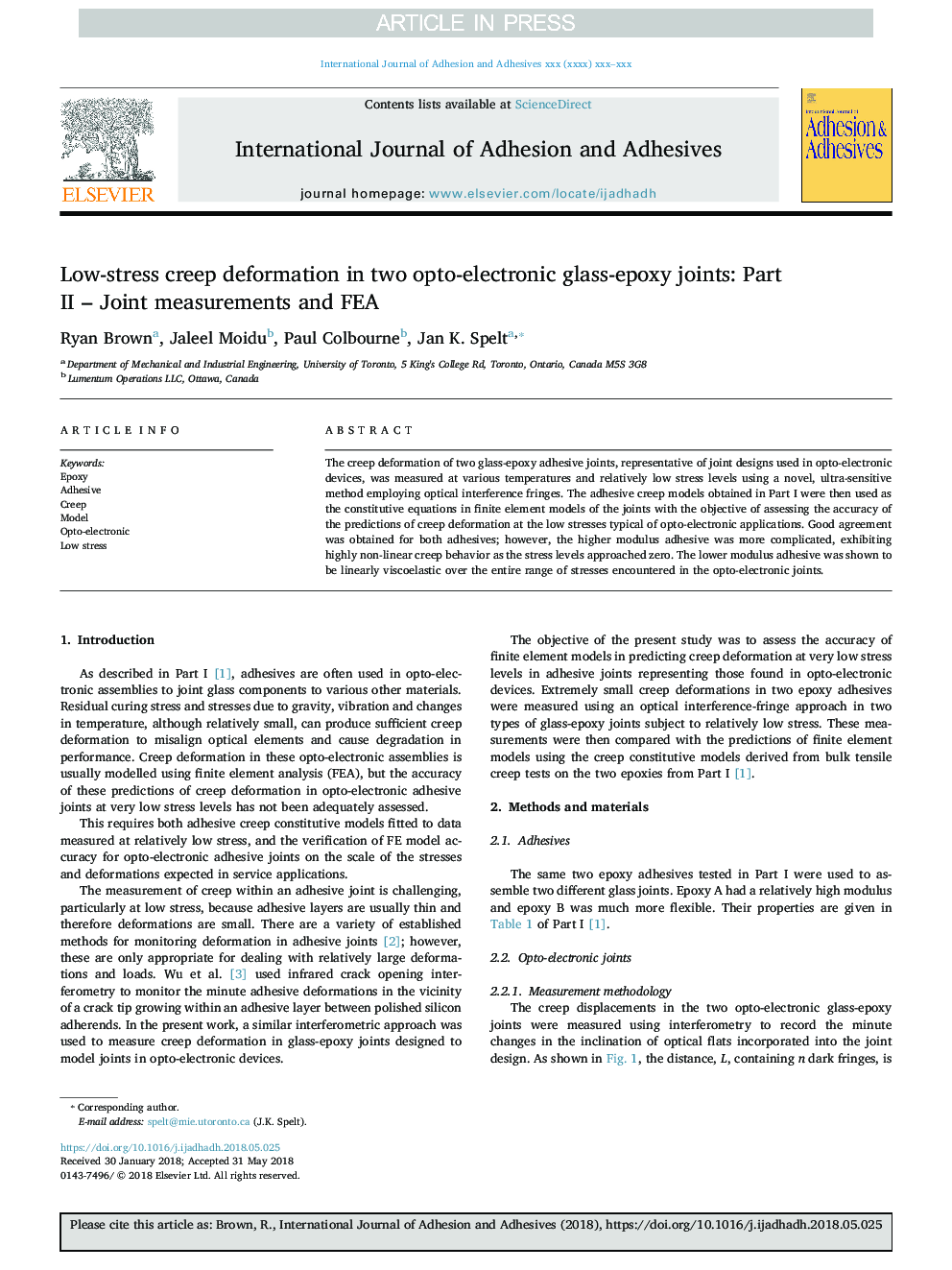| Article ID | Journal | Published Year | Pages | File Type |
|---|---|---|---|---|
| 11003906 | International Journal of Adhesion and Adhesives | 2018 | 8 Pages |
Abstract
The creep deformation of two glass-epoxy adhesive joints, representative of joint designs used in opto-electronic devices, was measured at various temperatures and relatively low stress levels using a novel, ultra-sensitive method employing optical interference fringes. The adhesive creep models obtained in Part I were then used as the constitutive equations in finite element models of the joints with the objective of assessing the accuracy of the predictions of creep deformation at the low stresses typical of opto-electronic applications. Good agreement was obtained for both adhesives; however, the higher modulus adhesive was more complicated, exhibiting highly non-linear creep behavior as the stress levels approached zero. The lower modulus adhesive was shown to be linearly viscoelastic over the entire range of stresses encountered in the opto-electronic joints.
Related Topics
Physical Sciences and Engineering
Engineering
Mechanical Engineering
Authors
Ryan Brown, Jaleel Moidu, Paul Colbourne, Jan K. Spelt,
